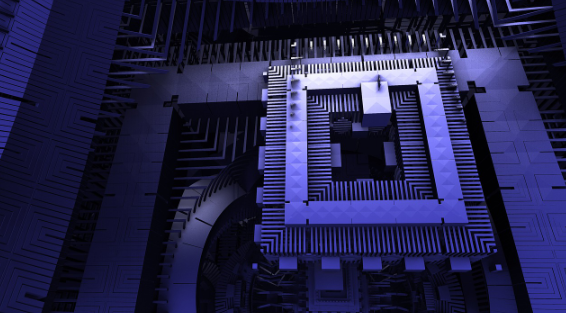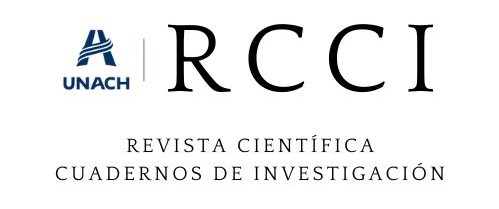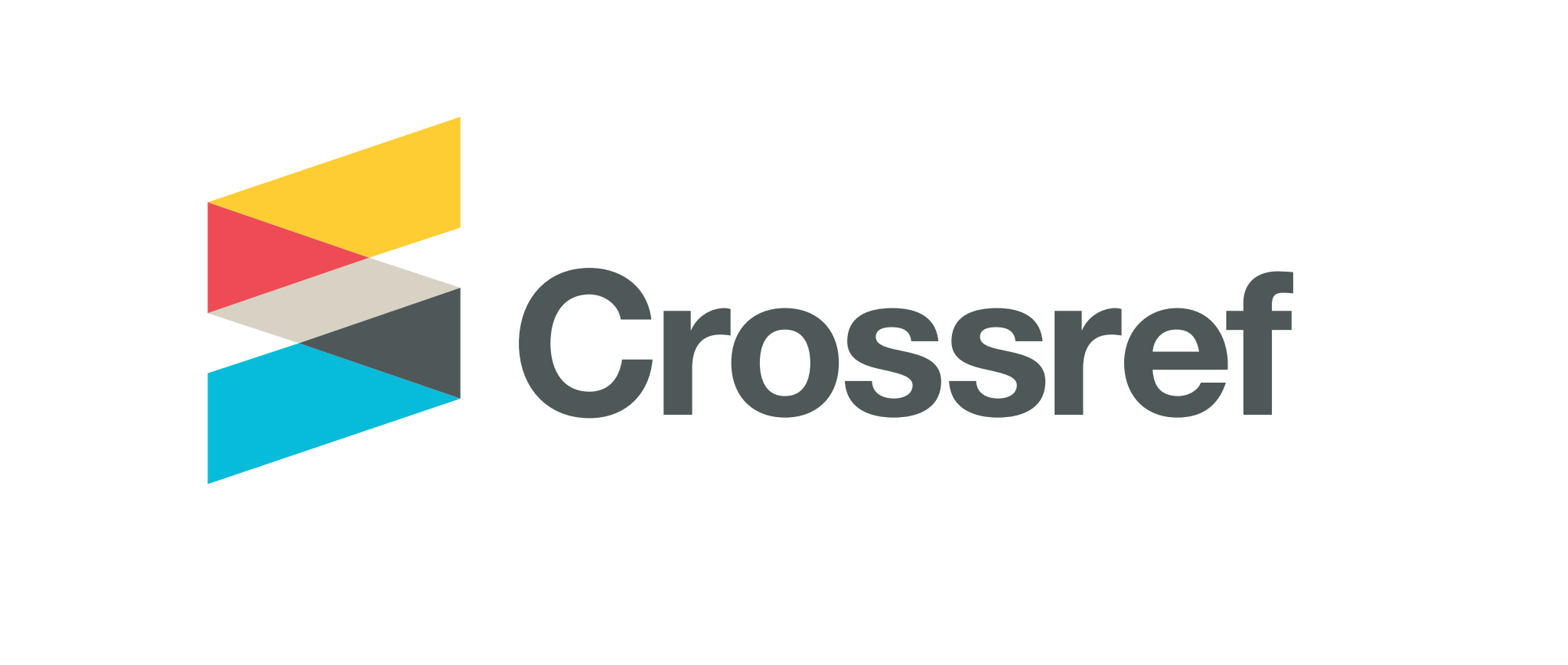NIOS II: Un procesador embebido para el desarrollo de sistemas en Field-Programmable Gate Arrays
DOI:
https://doi.org/10.59758/rcci.2025.3.e56Palabras clave:
NIOS II, Programa informático, Digitalización, Microprocesador, ProcesamientoResumen
Este ensayo analizó el papel del microprocesador embebido NIOS II, desarrollado por Intel, como una alternativa estratégica dentro de la computación reconfigurable. Se abordó su capacidad para posibilitar una digitalización personalizada en plataformas de arreglos de compuertas, lo que favoreció el avance tecnológico en el ámbito de los programas informáticos. El estudio se sustentó en una revisión documental de fuentes académicas y técnicas, complementada con un análisis interpretativo de los fundamentos del procesador, su arquitectura interna y las herramientas empleadas en el procesamiento de sistemas embebidos. Los hallazgos mostraron que la aplicación del NIOS II facilitó la comprensión de conceptos complejos de arquitectura de hardware y software, al tiempo que promovió la innovación y el aprendizaje activo. Asimismo, su incorporación en contextos educativos contribuyó a reducir la distancia entre teoría y práctica, fortaleciendo la transferencia tecnológica y el desarrollo de competencias en diseño digital. Finalmente, la evolución hacia el NIOS V, basado en una arquitectura abierta, amplió las perspectivas de investigación e innovación tanto en entornos académicos como industriales.
Descargas
Referencias
Adam, G. (2022). Co-Design of Multicore Hardware and Multithreaded Software on FPGA Platform. Computers, 11(5), 76. https://doi.org/10.3390/computers11050076
Ahid, F. & Givargis, T. (2002). Embedded System Design: A Unified Hardware/Software Introduction. John Wiley & Sons.
Ahmad, W.; Abbasi, I.; Sanwal, U. & Mahmood, H. (2018). Accelerating Viterbi Algorithm using Custom Instruction Approach. IEEE/ASME International Conference on Mechatronic and Embedded Systems and Applications, MESA. https://doi.org/10.1109/MESA.2018.8449144
Al Rayahi, O. (2008). A CAD Tool for Synthesizing Optimized Variants of Altera’s Nios II Soft-Core Processor. University of Windsor. https://scholar.uwindsor.ca/etd/8039/
Amiri, M.; Siddiqui, F. M.; Kelly, C.; Woods, R.; Rafferty, K. & Bardak, B. (2017). FPGA-Based Soft-Core Processors for Image Processing Applications. Journal of Signal Processing Systems, 89(2), 175–188. https://doi.org/10.1007/s11265-016-1185-7
Arcentales, V. (2016). Diseño de prácticas para el aprendizaje de sistemas embebidos basados en el procesador NIOS® II utilizando herramientas de Quartus II y la tarjeta DE0-Nano (Proyecto integrador de grado). Escuela Superior Politécnica del Litoral. https://www.dspace.espol.edu.ec/handle/123456789/38556
Baklouti, M. & Abid, M. (2014). Multi‐Softcore Architecture on FPGA. International Journal of Reconfigurable Computing, 979327. https://doi.org/10.1155/2014/979327
Balwaik, R. & Shailja N. (2013). Open-Source 32-Bit RISC Soft-Core Processors. IOSR Journal of VLSI and Signal Processing, 2, 43-46. https://doi.org/10.9790/4200-0244346
Cabrera, A.; Garcés, L.; Cabrera, A.; Culman, R.; Sánchez, S.; Brox, P.; Ieno, E.; Cleber, T. & Bob, B. (2023). Contribuciones a la implementación de sistemas electrónicos digitales embebidas sobre hardware reconfigurable. Anales de la Academia de Ciencias de Cuba, 13(4), http://scielo.sld.cu/scielo.php?script=sci_arttext&pid=S2304-01062023000400007&lng=es&tlng=es.
Cao, H. & Meyer-Baese, U. (2022). XML-Based Automatic NIOS II Multi-Processor System Generation for Intel FPGAs. Electronics, 11(18), 2840. https://doi.org/10.3390/electronics11182840
Castro, J. (2021). Implementación de algoritmos de aprendizaje automático en procesadores softcores basados en ARM. [Tesis de Licenciatura, Tecnológico de Costa Rica]. https://n9.cl/gpv7ga
Choi, E.; Park, J.; Han, K. & Lee, W. (2024). AESware: Developing AES-enabled low-power multicore processors leveraging open RISC-V cores with a shared lightweight AES accelerator. Journal of Electronic Science and Technology, 60, 101894. https://doi.org/10.1016/j.jestch.2024.101894
Dakić, V.; Mrsic, L.; Kunic, Z. & Dambic, G. (2024). Evaluating ARM and RISC V Architectures for High Performance and Energy Efficient Systems. Electronics, 13(17), 3494. https://doi.org/10.3390/electronics13173494
Deng, D.; Crookes, D.; Woods, R. & Siddiqui, F. (2022). A soft coprocessor approach for developing image and video processing applications on FPGAs. Journal of Imaging, 8(2), 42. https://doi.org/10.3390/jimaging8020042
Faycal, R.; Lahcene, Z. & Nabil, B. (2021). ISODATA SOPC-FPGA Implementation of Image Segmentation Using NIOS-II Processor. Indonesian Journal of Electrical Engineering and Computer Science, 22(2), 818–825. https://doi.org/10.11591/ijeecs.v22.i2.pp818-825
Gazziro, M.; Junior, J.; Junior, O.; Cavallari, M. & Carmo, J. (2024). Design and Evaluation of Open-Source Soft-Core Processors. Electronics, 13, 781, 1-20. https://doi.org/10.3390/electronics13040781
Gutiérrez, J. (2015). Implementación en una FPGA de un procesador básico basado en MIPS. [Trabajo Fin de Grado para optar al grado de ingeniero, Universidad de Valladolid]. Repositorio Universidad de Valladolid. http://uvadoc.uva.es/handle/10324/14472
He, N. & Huang, H. (2017). Use of model-based design to teach embedded systems programming. In 2017 IEEE International Conference on Electro Information Technology (EIT) (pp. 135–139). IEEE. https://doi.org/10.1109/EIT.2017.8053336
Hossain, M. (2024). Adaptive Beyond Von-Neumann Computing Devices and Reconfigurable Architectures for Edge Computing Applications [Doctoral dissertation, University of Central Florida]. https://n9.cl/97191
Huseynli, M.; Bub, U. & Ogbuachi, M. (2022). Development of a Method for the Engineering of Digital Innovation Using Design Science Research. Information, 13, 573. https://doi.org/10.3390/info13120573
Intel (2024). NIOS II software developer handbook. [Consulta: 30-3-2025]. https://www.intel.com/content/www/us/en/docs/programmable/683525/21-3/eol.html
Intel (2023). Nios® V Processor Overview. [Consulta: 15-4-2025]. https://www.intel.com/content/www/us/en/products/details/fpga/intellectual-property/processors-peripherals/niosv.html
Intel (2021). Introducing Intel’s Next-Generation of Nios® Soft-Core Processor: Nios® V Processor. Intel Blog. [Consulta: 23-5-2025]. https://community.intel.com/t5/Blogs/Products-and-Solutions/FPGA/Introducing-Intel-s-Next-Generation-of-Nios-Soft-Core-Processor/post/1342953
Islam, M. & Kise, K. (2022). An efficient resource shared RISC-V multicore architecture. IEICE Transactions on Information and Systems, 105 (9), 1585–1595. https://doi.org/10.1587/transinf.2021EDP7248
Khan, L.; Isanaka, S. P. & Liou, F. (2024). FPGA-Based Sensors for Distributed Digital Manufacturing Systems: A State-of-the-Art Review. Sensors, 24(23), 7709. https://doi.org/10.3390/s24237709
Keat, L.; Jambek, A. & Hashim, U. (2015). Heart rate monitoring system design and analysis using a Nios II soft-core processor. Journal of Electronics and Telecommunications, 62(3), 283-288. https://journals.pan.pl/dlibra/publication/116920/edition/101646/content
Kumar, B. (2023). Design of a Soft-Core Processor in FPGA. Intrenational Journal of Engineering Research & Technology (IJERT), 1 (2), 107-114. https://www.researchgate.net/publication/369233268
LaForest, C. E. (2015). High-speed soft-processor architecture for FPGA overlays [Tesis para optar al grado de Doctor, University of Toronto]. University of Toronto Research Repository. https://fpgacpu.ca/publications/High-Speed_Soft-Processor_Architecture_for_FPGA_Overlays.pdf
Lattice Semiconductor (s.f.). LatticeMico32 32-bit soft microprocessor core. Lattice Semiconductor. [Consulta: 15-6-2025]. https://n9.cl/u6hag
Lysecky, R. & Vahid, F. (2009). Design and implementation of a microblaze-based WARP processor. ACM Transactions on Embedded Computing Systems, 8 (3), 1-22. https://doi.org/10.1145/1509288.1509294
Magdaleno, E.; Rodríguez, M.; Pérez, F.; Hernández, D. & García, E. (2014). A FPGA Embedded Web Server for Remote Monitoring and Control of Smart Sensors Networks. Sensors, 14(1), 416-430. https://doi.org/10.3390/s140100416
Michon, R.; Ducceschi, M.; Cochard, P.; Skare, T.; Webb, C. J. & Russo, R. (2025). Evaluating CPU, GPU, and FPGA performance in the context of modal reverberation: A comparative analysis. Frontiers in Signal Processing, 5, 1522604. https://doi.org/10.3389/frsip.2025.1522604
Müller, L.; Schumacher, N.; Steffen, L. & Haubelt, C. (2024). Generative Design of the Architecture Platform in Multiprocessor System Design. Electronics, 13(7), 1404, https://doi.org/10.3390/electronics13071404
Muttillo, V.; Valente, G.; Federici, F.; Pomante, L.; Faccio, M.; Tieri, C. & Ferri, S. (2017). A design methodology for soft-core platforms on FPGA with SMP Linux, OpenMP support, and distributed hardware profiling system. Journal of Embedded Systems, 15, 1-14. https://doi.org/10.1186/s13639-016-0051-9
Nane, R.; Sima, V-M.; Pilato, C.; Choi, J.; Fort, B.; Canis, A.; Chen, Y.; Hsiao, H.; Brown, S.; Ferrandi, F.; Anderson, J. & Bertels, K. (2016). A survey and evaluation of FPGA high-level synthesis tools. IEEE Transactions on Computer-Aided Design of Integrated Circuits and Systems, 35(10), 1591–1604. https://doi.org/10.1109/TCAD.2015.2513673
Pozzana, F. (2020). RISC-V: An FPGA implementation for general purpose prototyping hardware. [Tesis para optar al grado de Master, Politecnico di Torino]. Politecnico di Torino Institutional Repository. https://webthesis.biblio.polito.it/16652/1/tesi.pdf
Pyrgas, L.; Kalantzopoulos, A. & Zigouris, E. (2016). Design and implementation of an open image processing system based on NIOS II and ALTERA DE2-70 board. Journal of Engineering Science and Technology Review, 9(5), 51-55. https://doi.org/10.25103/jestr.095.06
Ren, Y.; He, Y.; Zhang, X.; Yen, A. & Li, G-P. (2025). A Cyber Manufacturing IoT System for Adaptive Machine Learning Model Deployment by Interactive Causality-Enabled Self-Labeling. Machines, 13(304). https://doi.org/10.3390/machines13040304
Sáenz R., W., Rivera S., F. & Martínez S., F. (2018). 8-bit softcore microprocessor with dual accumulator designed to be used in FPGA. Revista Tecnura, 22(56), 40-50. https://doi.org/10.14483/22487638.12976
Santucci, R., Diamond, J., Eddy, N., Semenov, A., & Voy, D. (2022). A modern Ethernet data acquisition architecture for Fermilab beam instrumentation. In Proceedings of the 11th International Beam Instrumentation Conference (IBIC 2022) (pp. 500–503). JACoW Publishing. https://doi.org/10.18429/JACoW-IBIC2022-WEP40
Silva, I. S.; Luz, L. O.; Nepomuceno, R. & Dos Santos, J. C. (2014). Multi-Core Processor Programming: An Educational Experience Using FPGA Embedded Didactic Platforms. International Journal of Computer Architecture Education, 3 (1), 9–12. https://doi.org/10.5753/ijcae.2014.4934
Tuncel, Y.; Krishnakumar, A.; Chithra, A. L.; Kim, Y. & Ogras, U. (2022). A Domain-Specific System-On-Chip Design for Energy Efficient Wearable Edge AI Applications. In ACM/IEEE International Symposium on Low Power Electronics and Design (ISLPED '22), 20, 1–20. https://doi.org/10.1145/3531437.3539711
Villamizar, J.; Borra, V. & Li, F. (2024). Building fully digital controller with Altera Cyclone FPGA and NIOS processor for induction heating application. Discover Electronics, 1(27). https://doi.org/10.1007/s44291-024-00033-y
Xu, J.; Kovatsch, M.; Mattern, D.; Mazza, F.; Harasic, M.; Paschke, A. & Lucia, S. (2022). A review on AI for smart manufacturing: Deep learning challenges and solutions. Applied Sciences, 12(16), 8239. https://doi.org/10.3390/app12168239
Zagan, I. & Gaitan G. (2023). Soft-core processor integration based on different instruction set architectures and field programmable gate array custom datapath implementation. PeerJ Computer Science, 9, e1300. https://doi.org/10.7717/peerj-cs.1300
Zhang, J.; Guo, Y. & Mo, G. (2013). A Software Hardware Co-Design Approach for FPGAs on Nios II Soft-Core Processors. Applied Mechanics and Materials, 373–375, 1591–1594. https://doi.org/10.4028/www.scientific.net/amm.373-375.1591

Descargas
Publicado
Número
Sección
Categorías
Licencia
Derechos de autor 2025 Pedro Selencio Landaeta Herrera (Autor/a)

Esta obra está bajo una licencia internacional Creative Commons Atribución-NoComercial-CompartirIgual 4.0.






